How to choose the right bits
by | 30 August 2018 10:45 am
By Peter Saunders
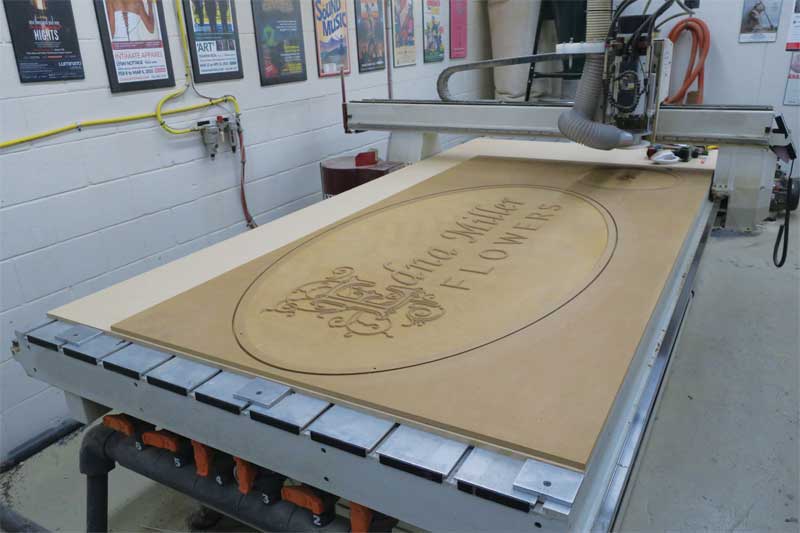 [1]
[1]
In all computer numerical control (CNC) routing applications, from hobbyists’ one-time projects to mass production lines, the bit selected for the job can make an enormous difference to the results. Choosing the right option can be confusing, but making the optimal decision is worthwhile, as it will help cut down on waste and material costs. Moreover, CNC bits—which range from solid carbide to steel, cobalt-chromium and diamond-tipped edges—directly determine the quality of the final product.
Applications and materials
Of course, the type of material to be cut will heavily inform the selection of CNC bit. Some sign shops use a router specifically for wood, while others process larger quantities of plastics, acrylics or aluminum. There are certainly many choices of materials that can be cut with the same router.
While a router may be highly versatile, a ‘one size fits all’ approach does not apply to bit selection. If the wrong bit is chosen for the given material, the cutting process may destroy the bit or, in the worst-case scenario, the machine itself. One goal to keep in mind is to cut the material without grinding it.
For some materials, multiple bit types can be used, while for others, there is only one preferred option. When cutting aluminum, for example, V-bits, ball-nose bits, upcut end mills and O-flutes will all clear chips of the material away, preventing them from fusing to the bit at very high operating temperatures. When cutting plywood or melamine, on the other hand, it is best to use a compression bit, which will avoid chipping or tearing the material.
The most versatile bits, which may be suitable for shops that are new to CNC routing or signmakers who simply prefer a multi-purpose approach, are probably two-flute spiral bits, which can be used to cut wood, foam, plastics and aluminum.
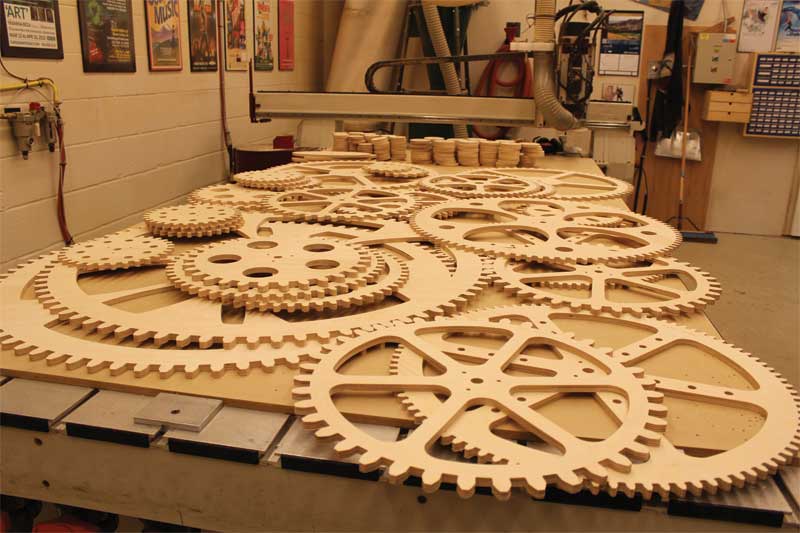 [2]
[2]Some sign shops use a router specifically for wood.
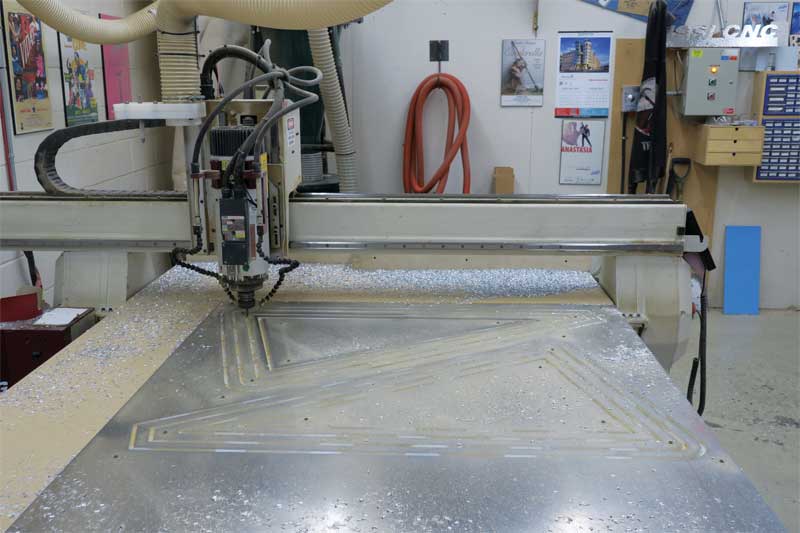 [3]
[3]Other shops process larger quantities of aluminum.
Speed vs. finish
Some projects need to be completed as quickly as possible. For others, the smoothness of the cuts is the top priority.
As such, the type of bit to be used at a specific stage of processing will depend largely on whether speed or accuracy is the most important consideration. Upcut end-mill bits, for example, are ideal for quick, straight cuts and deeper holes where chip evacuation is key, but can negatively affect the quality of the finish by fraying fibres. Ball-nose bits will achieve the best results when carving intricately detailed designs; they are used for two- and three-dimensional (2-D and 3-D) profiling and carving of wood, aluminum and plastics
and their rounded edges are designed to cut smooth contours.
The speed of a cutting feed will vary, depending on a few factors, including the following:
- The horsepower of the spindle.
- The strength of the clamps or vacuum table holding the panels down.
- The overall stability of the CNC router.
- The condition of the collet (i.e. the band around the spindle).
Cutting at a high rate right from the start can make it difficult to gauge the optimal speed. Instead, it is preferable to initially cut the material at a lower rate and then gradually increase the speed and feed, all the way up until the point where the quality of the finish starts to become unacceptable.
Speed factors into determining the correct diameter and size for the bit, through the context of its ‘chip load.’ This is a measurement of the amount of material removed by each cutting edge during CNC routing. Chip load can be only be calculated if the user knows the router’s feed rate—i.e. how fast a material will move through the machine, commonly measured in inches per minute—along with the bit’s speed in terms of revolutions per minute (RPM) and its number of flutes.
The formula for this calculation is as follows:
chip load = feed rate / (RPM x number of flutes)
It is important to keep in mind chips that are too large can break the router bit, while chips that are too small can turn waste into powder and dull the bit. So, it is very worthwhile to choose the right diameter and size of bit based on the chip load, as those factors will in turn affect the size of the chips.
That said, since the calculation of chip load is only based on an average thickness of material for a given cutting tool, it is just a starting point. So too are the tool vendor’s recommended settings. Ultimately, it is up to the machine operator to establish the proper settings for the sign shop’s applications, which will involve a process of trial and error.
As for the finish, the more flutes on the bit, generally, the higher the quality of the cut. Users can choose from one-, two-, three- and four-edged flutes on their CNC routing bits. The two- and three-flute bits may suffice when the quality of the finish is important, while the four-flute bits will provide the highest level of detail in their cuts. Ball-nose bits are an excellent option for designs that involve intricate components.
V bits are great for signmaking in general. They can cut decorative letters and grooves and may be used with an edge guide to chamfer and bevel (i.e. slope) the sides of a material. They are relatively inexpensive and can cut aluminum composite materials (ACMs), medium-density fibreboard (MDF), high-density urethane (HDU) foam boards, metals and fabrics.
Cutting direction
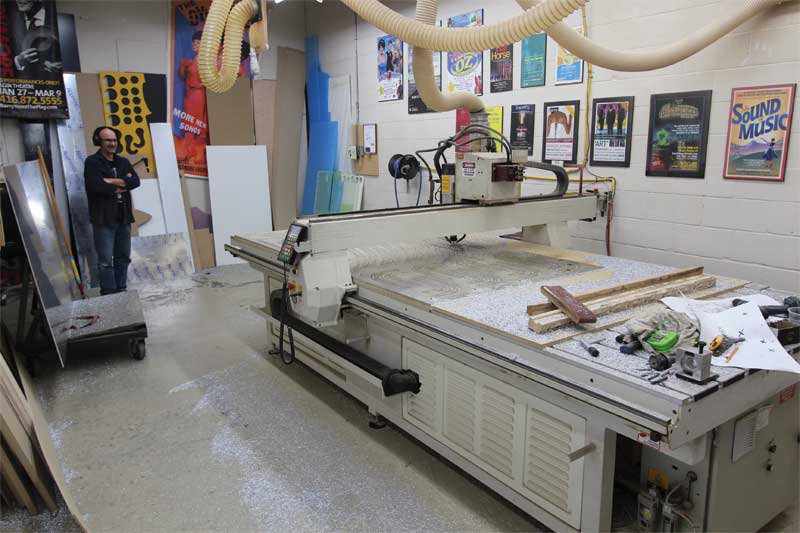 [4]
[4]Ultimately, it is up to the machine operator to establish the proper settings for the sign shop’s applications, which will involve a process of trial
and error.
In addition to selecting the router bit based on the material to be cut, it is essential to take the primary cutting direction—i.e. up or down—into account, so as to avoid damaging the material.
Upcut bits, as their name suggests, are beneficial because they pull the chips up and away from the material, but they will splinter plywood and melamine. Meanwhile, downcut bits, which press waste back into the cut, are great for cutting aluminum, but will melt plastics. This is because not allowing the chips to escape will create friction and, thus, a buildup of heat. A downcut endmill bit is suitable for slower feed rates and cutting shallower holes, where the finish is key.
Compression bits cut both up and down. They are generally a little more expensive, but provide a useful multi-purpose option for routing wood and, especially, plywood.
Other considerations
When purchasing a bit in the first place, there are several other factors worthy of attention, to ensure the sign shop gets the ‘biggest bang for the buck.’ Durability and performance, for example, are important to look into before making a significant investment in the technology.
Sharper bits provide clean cuts and will allow the machine to run quieter and use less power.
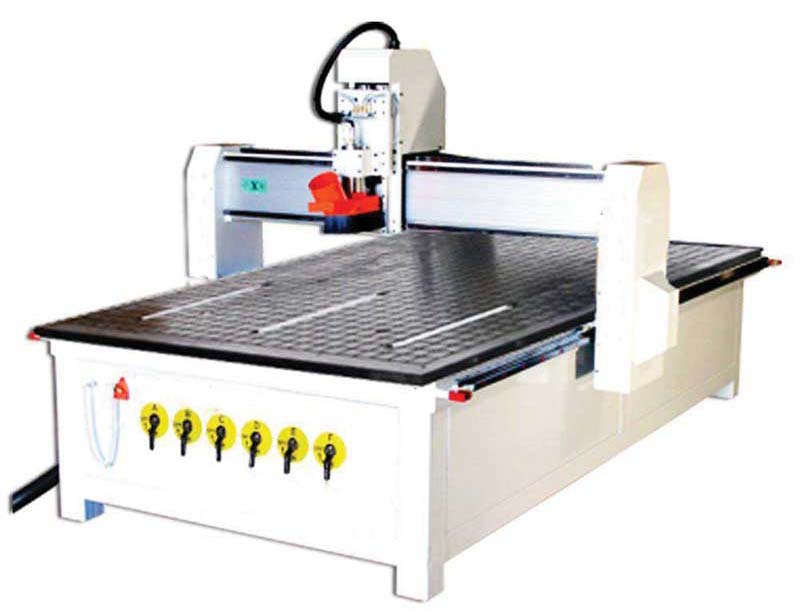 [5]
[5]The speed of a cutting feed will depend on the strength of the vacuum table holding the material down.
Shorter bits will also usually provide cleaner cuts, whereas longer bits tend to increase the degree of vibration, potentially causing the bit to bend. A larger shank diameter on the bit, meanwhile, will result
in cleaner cuts and prove more durable.
The longevity of CNC bits also depends on operators taking good care of them. This includes proper storage (e.g. in a dedicated ‘tool library’) and keeping them sharpened as needed. Cut consistency can also be ensured by always warming up the spindle prior to routing.
Once a sign shop has mastered the basics of CNC routing, highly specialized bits are also available for such purposes as boring holes, surfacing large panels, cutting miter folds (i.e. notches for angled folds) or routing frames for graphics. Indeed, with today’s range of CNC bits, a router can fabricate almost anything a signmaker might design.
With files from Laguna Tools, which manufactures CNC routers, fibre lasers, band saws, jointers, planers, mortisers, dust collectors and blades. For more information, visit www.lagunatools.com[6].
- [Image]: https://www.signmedia.ca/wp-content/uploads/2018/08/HSS_3.jpg
- [Image]: https://www.signmedia.ca/wp-content/uploads/2018/08/HSS_2.jpg
- [Image]: https://www.signmedia.ca/wp-content/uploads/2018/08/HSS_5.jpg
- [Image]: https://www.signmedia.ca/wp-content/uploads/2018/08/HSS_4.jpg
- [Image]: https://www.signmedia.ca/wp-content/uploads/2018/08/laguna-swift-cnc-vacuum_cro.jpg
- www.lagunatools.com: http://www.lagunatools.com
Source URL: https://www.signmedia.ca/how-to-choose-the-right-bits/